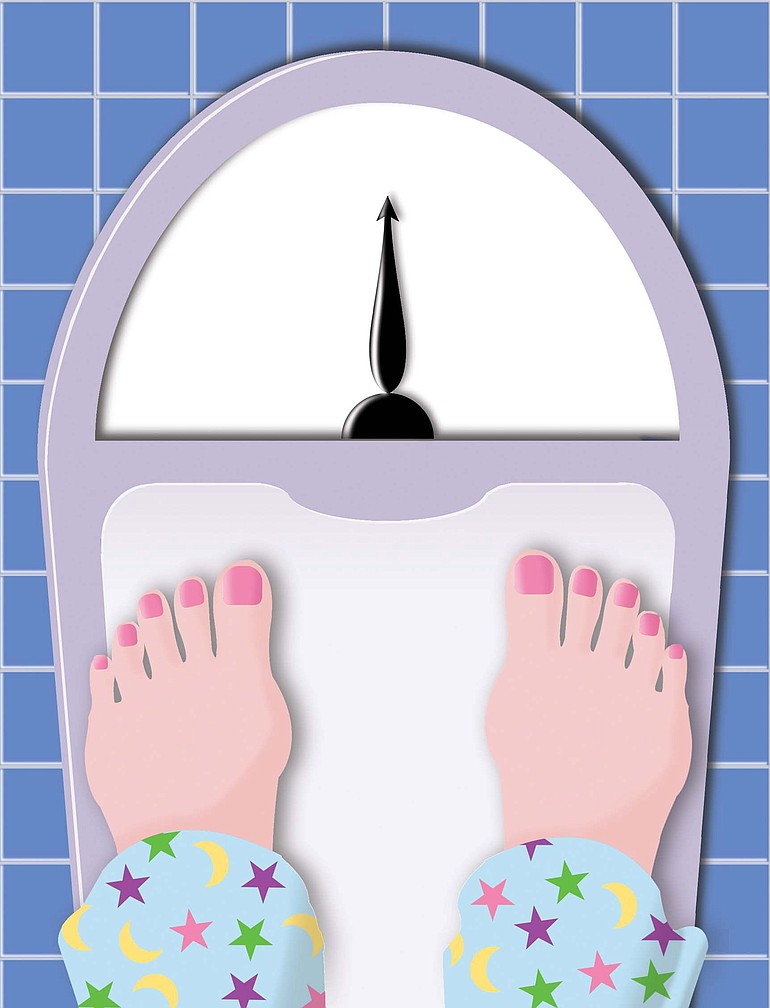Trying to get fit? Stop worrying about being up or down a few pounds.
That’s the consensus of doctors we asked to help us wade through the bewildering and sometimes conflicting number of ways to measure your fitness level.
Instead, these doctors say, you need to pay attention to your Body Mass Index and waist circumference.
Why? Because if you exercise the way you should, your body composition will change, with muscle replacing fat. Because muscle weighs more than fat, your weight may stay the same or even increase slightly as you become healthier.
There’s more to being fit than any single number, of course. But here’s a guide to sorting through the most important ones:
n BMI
What is it? Your most important number, according to all the doctors surveyed. Body Mass Index is your weight in kilograms divided by height in meters squared. Intimidating as that may sound, you can find BMI calculators at several sites online, including www.cdc.gov (search for “BMI calculator”).
Your target: A BMI of 18.5 to 25 is ideal. A BMI of 25-30 is overweight. A BMI of more than 30 is obese and brings a substantially increased risk of health issues, ranging from diabetes to depression.
Doctors warn that professional athletes may have a BMI that would be considered obese in an average person. Dr. Riva L. Rahl, preventive medicine physician and medical director at the Cooper Wellness Program, estimates that tennis superstar Venus Williams may have a BMI that would classify her as overweight. Dr. Nick Nicholson, bariatric surgeon on the Baylor Plano (Texas) medical staff, estimates that by BMI standards, many Dallas Cowboys players would be considered morbidly obese.
The doctors agree that you shouldn’t judge your fitness by the standards of a professional athlete. At the same time, Nicholson adds that exercise is such an important component of fitness that people with a BMI of 30 who exercise four days a week have a lower risk of a heart attack than people with a BMI of 24 who don’t exercise.
n WAIST CIRCUMFERENCE
What is it? The number of inches around your waist as calculated by a tape measure at the smallest area above the umbilicus and not by your pants size.
Your target: For men it should be less than 40 inches and for women under 35 inches no matter what your height is. Above those levels, your risk for cardiovascular disease, hypertension, strokes and some cancers significantly increases.
n WEIGHT
What is it? Your weight on a scale.
Your target: You can plot your goal according to your height and gender, but this is the least useful measurement, according to the doctors. Nicholson says he would rather see a patient focus on losing sizes rather than losing pounds.
n TRICEPS SKIN-FOLD THICKNESS
What is it? When you hold up your arms to show your biceps and reach the skin fold, the number of inches is directly related to your underlying body fat. This is a difficult measurement to make on one’s own. It usually requires a medical or fitness professional.
n BONE SIZE
What is it? The size of your bones as determined by a doctor. But while some people do have bigger bones than others, Rahl says the differences are not significant enough to account for different recommended BMI or waist size.
Other vital numbers
n 150: Rahl says if adults would log 150 minutes of aerobic exercise a week, they would significantly reduce their risk of cardiovascular disease, according to the Physical Activities Guidelines for Americans released last year (available at www.health.gov). And if they would mix in two weekly sets of strength training for 10 minutes at a time, that would be even better, she says.
n 10,000: Nicholson says adults could improve their fitness greatly by taking 10,000 steps each day, as recommended by several national societies. “Wear a pedometer,” he recommends, noting that it can be fit easily into an ordinary day.



